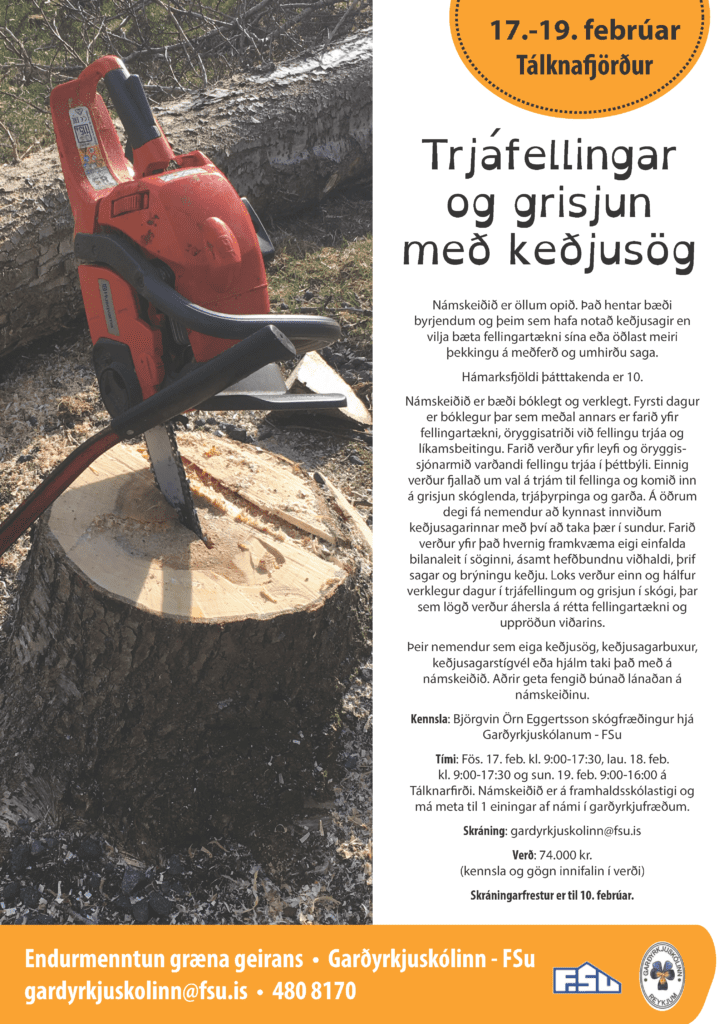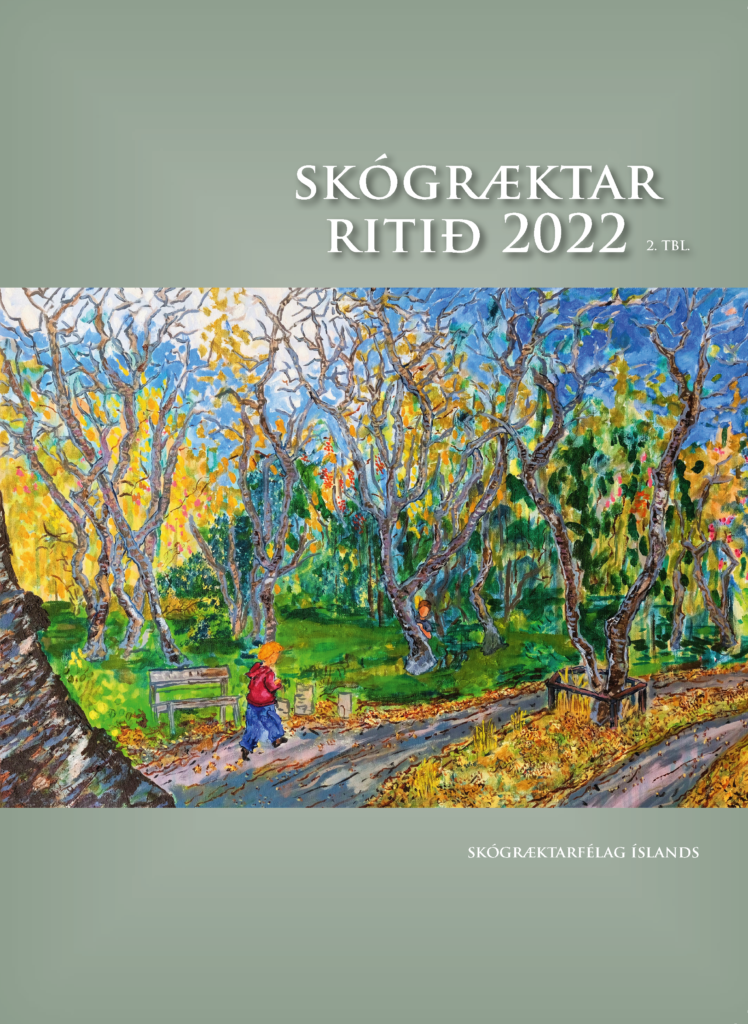The Icelandic Forestry Association and the Capital Area Planning Committee will host an informative meeting on the Green Trail at the Arion Bank meeting room, Borgartún 19 in Reykjavík on Friday, March 3rd, at 13 – 17.
Everyone is welcome and admission is free. To register for the meeting e-mail skraning@skog.is. The registration deadline is March 1. The meeting will be streamed for those wishing to attend remotely at registration. A link will be sent prior to the meeting.
Programme
| 13:00–13:05 | Opening address | Jónatan Garðarsson, chairman of the Icelandic Forestry Association |
| 13:05–13:30 | The Green trail– history, status | Þráinn Hauksson, landscape architect |
| 13:30–13:50 | Longer commuting routes in regional planning | Pawel Bartoszek, chairman of the Capital Area Planning Committee |
| 13:50–14:10 | Capital area trail construction | Katrín Halldórsdóttir, engineer, Icelandic Road and Coastal Administration |
| 14:10–14:30 | The importance of the Green Trail | Albert Skarphéðinsson, traffic engineer |
| 14:30–14:50 | Public health and the Green Trail | Sylgja Dögg Sigurjónsdóttir, public health specialist |
| 14:50–15:20 | The Green Trail from the perspective of forestry associations | Auður Kjartansdóttir, Director of the Reykjavík Forestry Association |
| 15:20–15:30 | Address | Minister of Infrastructure Sigurður Ingi Jóhannsson |
| 15:30–16:00 | Coffee break | |
| 16:00–17:00 | Panel discussion | Representatives from the Capital Area municipalities along with speakers |










Nýlegar athugasemdir